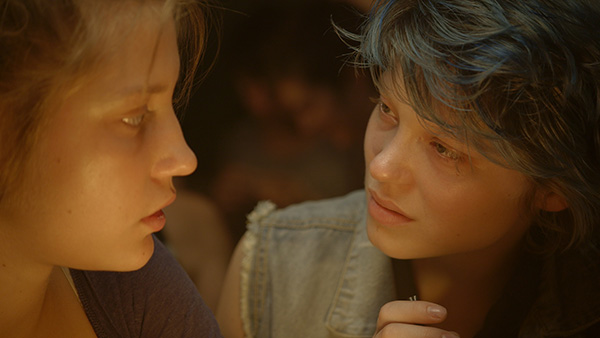
Hyped as the most controversial film of the year because of its NC-17 rating and arguably pornographic use of lesbian sex, “Blue is the Warmest Color” manages to not only live up to its reputation as a risqué film, but it actually surpasses these wild expectations by giving viewers much more than anticipated. It is a three-hour character study that builds a strong connection with the protagonist — a bond so strong it has a power that other character studies rarely achieve.
The film follows a 15-year-old French girl, Adèle (Adèle Exarchopoulos), as she falls in love and engages in a complicated relationship with the older, blue-haired Emma (Léa Seydoux), while coming to terms with her own sexuality and desires.
If there’s one word that could describe the style of this film, it’s intimate. There are at least 10 minutes of long and intense sex scenes between Adèle and Emma, which almost fall into the genre of pornography. But unlike pornography, the viewer can sense love between the characters. Adèle is mesmerized by how free and mysterious Emma is, while Emma admires Adèle’s innocent and soul-searching ways. Combine these emotional feelings with two attractive girls, and the film includes sex scenes that could make even porn directors blush.
Writer-director Abdellatif Kechiche also uses food to portray the passion between Adèle and Emma. The characters always seem to be eating something, especially Adèle. The genius behind watching Adèle eat is how much insight it gives the viewer into her persona — every time she takes a bite of food, whether it’s a chocolate candy bar or spaghetti, her face lights up and conveys the greatest pleasure. Adèle finds enjoyment in physical gratification, but as the story progresses, one begins to realize how her carnal — and perhaps simple — desires in life might not be enough to satisfy Emma, an intellectual who is seeking great questions through her art.
The scenes that leave a mark on the viewer, however, aren’t the pleasure-filled moments, but the sequences of heartbreak. While Adèle makes a few foolish mistakes, her heart is always pure, and she never truly means to hurt anybody. The backlash and heartbreak she suffers from the aftermath of her errors are enough to bring an audience to tears. It’s hard not to empathize with a character who bares all of her feelings instead of putting on a brave face for show.
The true theme that “Blue is the Warmest Color” addresses is the consequences of two different worlds colliding. The film raises questions of whether a simple, pleasurable life or an ambitious, intellectual one is better. Even if one can determine which is preferred, can these two different desires or lifestyles co-exist in a healthy relationship? Perhaps not, Kechiche suggests, but there is beauty in the struggle.
A version of this article appeared in the Thursday, Oct. 24 print edition. Alex Mujica is a staff writer. Email her at [email protected].






















































































































































